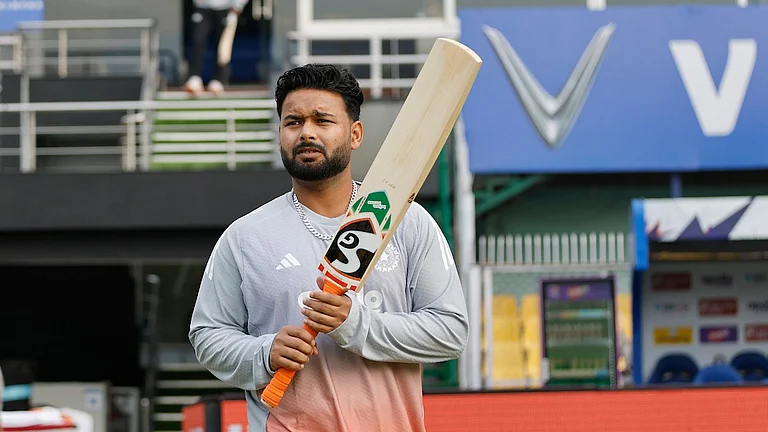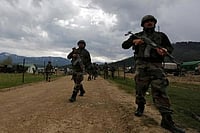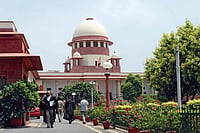Amar Singh Chamkila, one of the greatest stage singers of Punjab who rose to fame with ‘Pehle Lalkare Nal’, was assassinated in 1988. His killing is still unsolved with many alleging the hands of Khalistani operatives who felt his songs were against their movement. Now the recent killing of rapper Shubhdeep Singh alias Sidhu Moosewala completes a full circle of Punjab’s tryst with a violent end to musicians.
Coming out of the dark days of terrorism, Punjab moved forward on the gains from the rural economy and remittances inflow. The early 2000s saw a steep rise in the migration of youth to Australia and Canada. Punjabis became one of the most prosperous diasporas in foreign lands. The music industry attracted massive investments from foreign countries, especially Canada with Brampton, a suburb of Toronto, turning into a hotspot for production houses and recording studios. Soon Punjabi hip-hop became popular with the following of millions of youths both in India and abroad. In no time, traditional ‘tumbi’ (‘a traditional musical instrument from the Punjab region’) gave way to the drum machine-synthesiser. The videos of models dancing around fancy supercars to the tunes of desi hip-hop caught everyone’s eye.
Many of these songs were themed around catchy slogans like ‘Gangland’, ‘Hathyar’, ’32 Bor’, ‘Jattanda Put’. Set to peppy beats, these songs were all about revenge, weapons and gangs. Some songs have been brazenly casteist, lionising the Jatt community, an agrarian community of Punjab. Coming from the land of Nanak, few things can be as ironical as this.
Against this backdrop, the ghastly murder of Moosewala cannot be seen in isolation. In 2018, Parmish Verma, an acclaimed singer was shot but he miraculously survived after being hit by a bullet in his leg. Another attack was on singer Karan Aujla when gunshots were fired at a house in Surrey, Canada. What the Punjabi music industry is going through is its Bollywood moment. Just the way the 1980s and 90s saw the Mumbai underworld exert control over Bollywood, in today’s Punjab, gangs are using violence and fear to establish their hold over the music industry.
The prominent gangs of Lucky Patial, Davinder Bambiha, Lawrence Bishnoi, Harvinder Singh ‘Rinda’, Jaggu Bhagawanpuri and so on have expanded their networks worldwide with operatives in Canada, Europe and East Asia. Goldy Brar, a gangster of the Lawrence Bishnoi gang based out of Canada, who is said to be behind Moosewala’s killing, has alleged that the singer was hand-in-glove with Lucky Patial--Davinder Bambiha gang. Moosewala’s murder may be seen as a ‘trophy kill’ to maintain one-upmanship between the gangs. The investigation agencies confirmed the use of AK series weapon in his murder. The use of such sophisticated weaponry by these gangs is worrisome as it suggests an active transborder network.
It is interesting to note that many of the present-day gangsters, including Lawrence Bishnoi and Lucky Patial, were students of Punjab University involved in active college politics. Why have these educational institutes become the breeding ground for gangsters? Are they just ‘cannon fodder’ to the greater political scheme?
It can be reliably said that these gangs run extortion rackets, they then invest the money into music production companies. It’s a well-oiled system and it must not be easy for the singers to maintain neutrality at the cost of their life and property. Many of them either out of fear or as a protection system end up associating with these warring gangs. It’s a vicious cycle where their songs about guns and violence, which their fans love, start to imitate the lives they lead.
To safeguard their interests, the criminals are getting innovative. Take the case of Harvinder Singh ‘Rinda’ who has four cases of murder against him in Chandigarh. His family shifted from Tarn Taran in Punjab to Nanded in Maharashtra when he was eleven. In no time, he turned into a hardened criminal involved in murders and extortions across Maharashtra and then spread his influence in Punjab. He then transitioned into a ‘fighter of faith’, sneaking into Pakistan, allegedly facilitated by Wadhwa Singh, founder of Babbar Khalsa International, a banned terrorist organisation supported by ISI.
The recent attacks on the intelligence headquarters in Mohali and the RDX blast in the Ludhiana court complex indicate that Rinda’s network has been used for terrorist acts. These acts convey that the old guard of the Khalistan movement is hunting for young legs to run their secessionist agenda. This shift from gangsters to ‘fighters of the faith’ is novel, and the people of Punjab must reject it.
In the recent video of Goldy Brar, which he released after Moosewala’s killing, he emphasises his devotion to the Guru. He also admits that he and Lawrence Bishnoi tracked Jagdish Tytler, a Congress leader alleged to be involved in the 1984 Sikh riots in Delhi. It is baffling to see these cold-blooded murderers quoting great Sikh texts as their inspiration.
A recent music video went to the extent of lionising Balwinder Jattna, a Khalistan terrorist responsible for killing innumerable innocent people. Music is a powerful creative expression of a society. Punjab with its rich history, culture and traditions must reject the chest-thumping, gun-wielding, violence-inducing songs. The industry must go back in history to unearth the real heroes and their act of heroism which has inspired ‘Punjabiyat’ for centuries.
The killing of Moosewala shows the deeper malaise in Punjab. The economy is struggling to match the expectations of the youth of the state. Not able to gain quality education and employment, these youngsters become easy bait for gang recruitment at a young age. The state must redeem itself from these challenges, by providing opportunities for the youth, and maintaining public safety. Punjab has suffered for far too long and rightly deserves a bright future. The road to normalcy will be arduous, but Punjabis are known to steer difficult paths.
(The author of this article did not want to be named.)


























